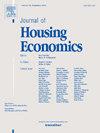房价、机场噪音和不可预见的沉默事件
IF 2.4
3区 经济学
Q3 ECONOMICS
引用次数: 0
摘要
为了评估噪音暴露对房价的因果影响,我们利用了德国 COVID-19 措施实施时航班流量突然大幅减少的情况。通过差分法比较不同地区受大流行前噪音影响的程度,我们发现噪音降低的公寓价格上涨了 2.4%。在对时间动态进行分解后,我们发现在 2021 年中期出现了一个峰值效应(高达 6%),该效应一直持续到 2023 年,尽管幅度较小。与大多数评估结果表明设立障碍物会对房价产生负面影响不同,我们的研究表明,解除障碍物会使社区房价立即回升。这种立即赶超的现象与当地(时间)因素导致的房价粘性相矛盾。时间模式显示,大流行期间的影响达到了一个明显的峰值,这可能暗示了信息不对称,因为购房者可能不知道大流行期间非大流行的噪音水平。本文章由计算机程序翻译,如有差异,请以英文原文为准。
Housing prices, airport noise and an unforeseeable event of silence
To evaluate the causal impact of noise exposure on housing prices, we exploit a sudden and massive reduction in flight traffic that occurred with the onset of the COVID-19 measures in Germany. Comparing locations differently exposed to pre- pandemic noise with a difference-in-difference approach, we detect a 2.4% increase in prices for apartments that experienced a noise reduction. Disentangling temporal dynamics, we find a peak effect in mid-2021 (up to 6%), with the effect persisting until 2023, albeit at a lower magnitude. In contrast to most evaluations show- ing that the erection of a disamenity affects prices negatively, we show that lifting the burden enables neighborhoods to catch up again immediately. The immediate catch-up contradicts a stickiness of housing prices regarding (temporal) local fac- tors. The temporal pattern shows a clear peak of the effects during the pandemic, which potentially hints at information asymmetries since buyers may not know the non-pandemic noise level during the pandemic.
求助全文
通过发布文献求助,成功后即可免费获取论文全文。
去求助
来源期刊

Journal of Housing Economics
Multiple-
CiteScore
3.30
自引率
4.20%
发文量
35
期刊介绍:
The Journal of Housing Economics provides a focal point for the publication of economic research related to housing and encourages papers that bring to bear careful analytical technique on important housing-related questions. The journal covers the broad spectrum of topics and approaches that constitute housing economics, including analysis of important public policy issues.
 求助内容:
求助内容: 应助结果提醒方式:
应助结果提醒方式:


